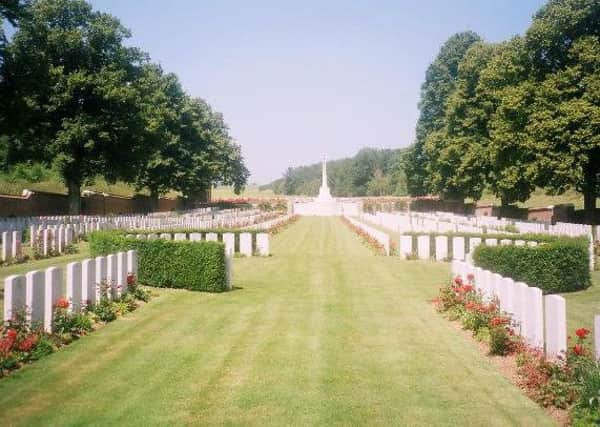1915: 12th Irish Rifles ready for winter on the Somme front


We continue our look back on the experiences of so many local men who found themselves far away from home through our ongoing examination of the unit’s ‘war diary’ which was written up by a selected officer and sent back to the Divisional headquarters.
The war diary for November records a major change in the structure of the battalion.
Advertisement
Hide AdAdvertisement
Hide Ad“Notification was received yesterday that Lt. Col. McCalmont had been appointed to command the 1st Bn Irish Guards and that Major G. Bull, 1st Royal Irish Fusiliers, was appointed to commanding the 12th R. Ir Rifles. Today (November 1), Col. McCalmont left the Bn. which he had raised and trained for a year, amid the regret of all ranks.”


The following day, the new C.O. received his first independent asessment of the men and officers under his command. Major (soon to be Lt. Col.) Bull would have had good reason to be pleased with the report received from the General Officer of the 4th Division to which the 12th R. Ir. Rifles had been attached for instruction. The war diary proudly records: “Officers had their men well under control and are keen and capable. NCOs are of fair capacity but still have much to learn and lack confidence in themselves, but displayed keenness and anxiety to learn. Discipline was excellent and above the average of most battalions recently attached. Learning was excellent. Signallers require more training especially on the buzzer (morse code). The Bn. is well commanded and its general system is good.”
Receipt of ‘this satisfactory report’ was also a matter of pride to the 36th (Ulster) Division’s GOC, who sent a note to this effect to the battalion.
Thankfully, a ‘new hand’ takes over the keeping of the war diary on November 3! The entries up that date had been inserted in the frustrating scribble of Captain & Adjutant the Hon. R. W. H. (Hugh) O’Neill, brother of Captain Arthur O’Neill, who as MP for Mid-Antrim had been the first parliamentarian killed on active service in the war. The diary notes that O’Neill (who was to become MP for Mid-Antrim after the war) left to take up duties at Divisional HQ as claims officer. His position as adjutant was filled by Captain G. Thompson. What this says about O’Neill’s administrative ability is a matter for debate but from a historical perspective, one can only rejoice at the neat, legible writing and attention to detail which characterised Thompson’s work!
Advertisement
Hide AdAdvertisement
Hide AdFrom November 3 to 14, the Bn.remained at Bernaville, taking part in various Brigade training exercises.


On the 14th of the month, the Central Antrims marched off to billets in Halloy on a route which took them through Doullens. Thompson recorded: ‘No men fell out on the march.’ After an overnight stay, the Bn. was on the move again. ‘A’ and ‘B” coys. went to the trenches at Fonquvillers (inevitably Funkyvillers in the trench argot) where they were attached to the 5th and 7th Warwicks respectively. HQ, ‘C’ and ‘D’ coys went to Bayencourt where they camped under canvas in snowy weather which had the extra bite of a bitter frost. In the following few days, the situation remained unchanged although the men of ‘C’ and ‘D’ coys were given an introduction to what many infantrymen regarded as the curse of the trenches … the dreaded ‘working party’. On the 20th, ‘A’ and ‘B’ coys were relieved by ‘C’ and ‘D’.
The diary noted that time spent in the trenches was ‘very trying’ owing to their ‘wet and dirty condition’ … in months and years to come the Bn. would experience the full spectrum of Western front weather and ground conditions. On November 23, the diary recorded that ‘No. 18003 Lance Corpl. H. Kellet of ‘B’ Company, a stretcher bearer, was wounded in the arm. The following day, the 12th R. Ir. Rifles played their first football match on French soil, recording a 4-1 victory over the 5th Royal Warwicks.
After this sporting success, it was back on the road for the 12th Bn. with matches to Puchevillers (‘no men fell out’) and onwards during the next few days until they reached Les Quesnoy. On the 29th the battalion practiced with ‘tube helmets’ – a reference to the gas masks which had become vital since the introduction of chemical warfare in early 1915.